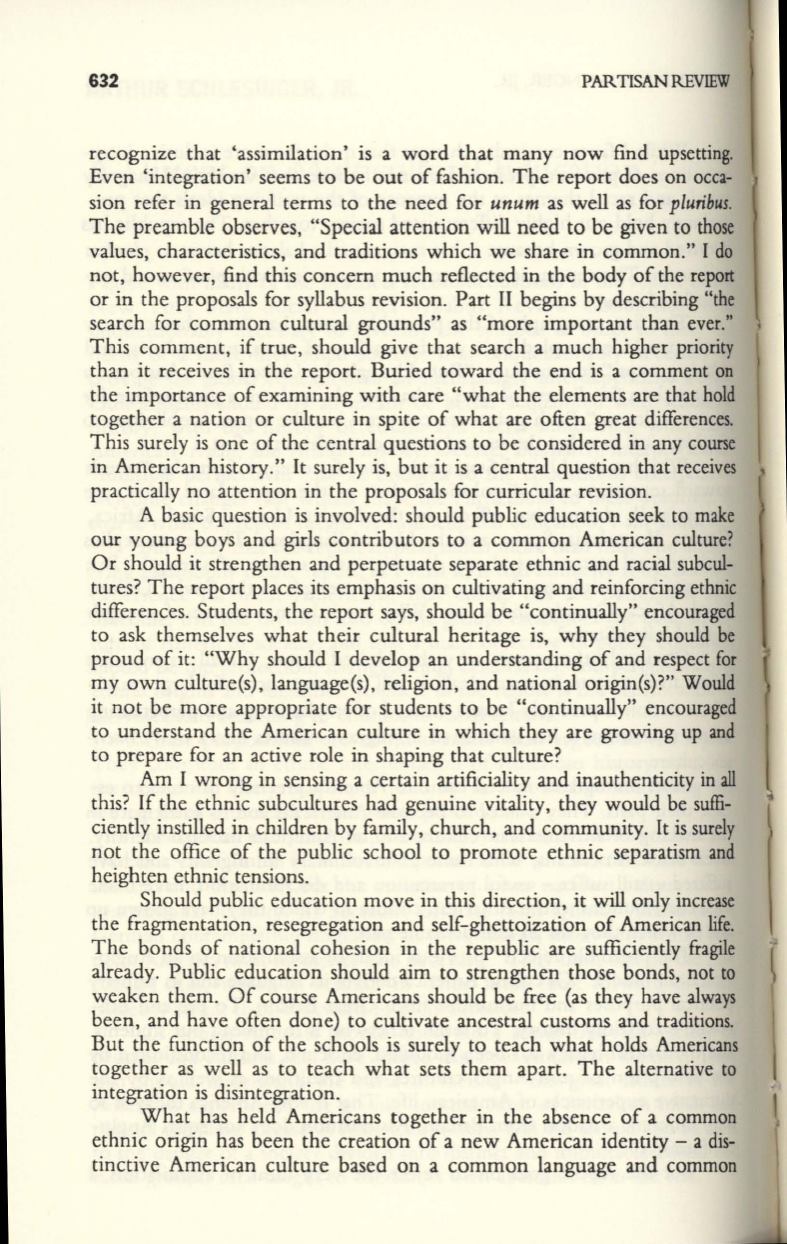
632
PARTISAN REVIEW
recognize that 'assimilation' is a word that many now find upsetting.
Even 'integration' seems to be out of fashion. The report does on occa–
sion refer in general terms to the need for
unum
as well as for
pluribus.
The preamble observes, "Special attention will need to be given to those
values, characteristics, and traditions which we share in common." I do
not, however, find this concern much reflected in the body of the report
or in the proposals for syllabus revision. Part II begins by describing "the
search for common cultural grounds" as "more important than ever."
This comment, if true, should give that search a much higher priority
than it receives in the report. Buried toward the end is a comment on
the importance of examining with care "what the elements are that hold
together a nation or culture in spite of what are often great differences.
This surely is one of the central questions to be considered in any course
in American history." It surely is, but it is a central question that receives
practically no attention in the proposals for curricular revision.
A basic question is involved: should public education seek to make
our young boys and girls contributors to a common American culture?
Or should it strengthen and perpetuate separate ethnic and racial subcul–
tures? The report places its emphasis on cultivating and reinforcing ethnic
differences. Students, the report says, should be "continually" encouraged
to ask themselves what their cultural heritage is, why they should be
proud of it: "Why should I develop an understanding of and respect for
my own culture(s), language(s), religion, and national origin(s)?" Would
it not be more appropriate for students to be "continually" encouraged
to understand the American culture in which they are growing up and
to prepare for an active role in shaping that culture?
Am I wrong in sensing a certain artificiality and inauthenticity in
all
this? If the ethnic subcultures had genuine vitality, they would be suffi–
ciently instilled in children by family, church, and community.
It
is surely
not the office of the public school to promote ethnic separatism and
heighten ethnic tensions.
Should public education move in this direction, it
will
only increase
the fragmentation, resegregation and self-ghettoization of American life.
The bonds of national cohesion in the republic are sufficiently fragile
already. Public education should aim to strengthen those bonds, not to
weaken them. Of course Americans should be free (as they have always
been, and have often done) to cultivate ancestral customs and traditions.
But the function of the schools is surely to teach what holds Americans
together as well as to teach what sets them apart. The alternative to
integration is disintegration.
What has held Americans together in the absence of a common
ethnic origin has been the creation of a new American identity - a dis–
tinctive American culture based on a common language and common


